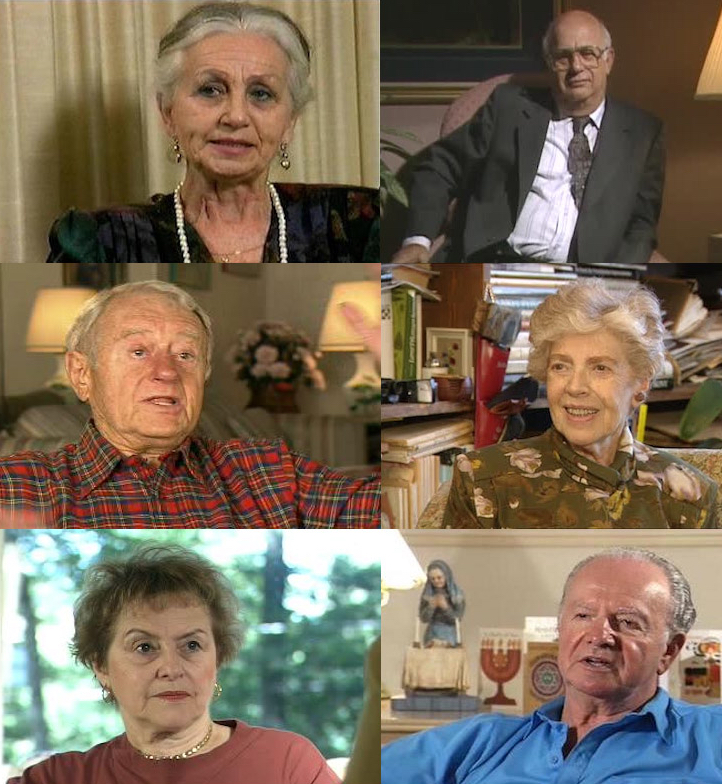“People were dying like flies”: A reflection on COVID-19 and epidemics during the Holocaust

Only a day after the University of Southern California announced that it would conduct a three-day test to move all classes online, which soon turned into a permanent arrangement until the end of Spring semester, my colleague and I gave our last in-person introduction to the USC Shoah Foundation Visual History Archive to a USC class. Perhaps serendipitously, one of the topics discussed in this class was physical health. To tailor the introduction to their class material, I searched the USC Shoah Foundation Visual History Archive and located a substantial amount of content related to epidemics of various diseases during the Holocaust. A couple of weeks later, I find myself returning to this content and reflecting on its significance for what our world is experiencing today.
The USC Shoah Foundation Visual History Archive contains over 1,600 testimonies in which interviewees discuss epidemics, including diseases that unfolded in specific places, such as epidemics in ghettos, camps, and prisons. While epidemics were widespread in such places during the Holocaust, this topic has been understudied in the scholarly literature. Yet the archive contains a wealth of material on this topic. Similarly, although there is substantial literature in the field of medicine on the 1918 pandemic of Spanish Influenza, which we all know today as the flu, very little is written about people’s individual experiences of the pandemic and its effects on people’s lives afterwards.
As the situation with COVID-19 unfolds day by day, we seem to be increasingly turning to the past for reference, comparing what is happening now to previous cases of epidemics and/or pandemics. For example, last week the Guardian published an article in which two survivors of the 1918 flu shared their concerns and warnings about COVID-19. The article included an image showing a field hospital in Massachusetts set up to accommodate the flu patients in 1918. These days, we are seeing and hearing news about makeshift testing sites, surgical rooms turned into intensive care units, and new hospitals built from scratch to accommodate the overflow of new patients.
In the USC Shoah Foundation Visual History Archive testimonies, we can not only hear about the experiences of Holocaust survivors who also survived epidemics, but we can learn firsthand what it means to live through an epidemic when already enduring extraordinarily difficult conditions during which no care was available or given.
In many of these testimonies, when discussing epidemics, survivors recall that people were “falling” or “dying like flies” once diseases started to spread. When describing her time at Bergen-Belsen, Olga Horak points out that towards the end of the war in 1945, the camp “did not need to have gas chambers. It had crematorias. The people just died like flies. We were stricken by typhus, dysentery, diphtheria, cholera, tuberculosis, and who knows how many other sicknesses.” People tried to hide their sickness the best way they could and sometimes with the assistance of others. In his testimony, Sol Waxberg recalls that when the epidemic of dysentery hit Blechhammer, one of the sub-camps of Auschwitz, he also got infected, but was able to hide it: “… most of those who got sick were not as lucky as I was, because everyone that got sick, we’ve never seen them until today.” Waxberg noted that the Germans took those who got sick out. In another camp, Dernau, Ned Aron and many other inmates were sick with typhus. He recalls, “The camp did not have any type of medication. None of us received medication, none of us. Those of us who were strong enough to overcome it in a natural way survived. Those that did not, they died like flies. Before I’ve gotten sick with this, when you walked to your bunk bed, you had to walk through hundreds of people that were lying dead. Hundreds, not tens, hundreds were lying dead on the floor, on their bunk beds.” While some survivors remember receiving aid when they were sick, or getting advice from Jewish doctors in ghettos about what to do to try to stop their disease, most of those who got sick were eliminated by the Nazis or left to die. Each testimony about epidemics in the USC Shoah Foundation Visual History Archive renders a powerful portrait of illness and suffering, but also remarkable resilience.
These past few weeks, we have been living through an extraordinary time. We are hearing and reading firsthand accounts on a daily basis since the world has entered its struggle with COVID-19. We are bracing ourselves for the worst, while still not realizing the full gravity of the situation. We also do not realize how lucky we are.
Like this article? Get our e-newsletter.
Be the first to learn about new articles and personal stories like the one you've just read.
